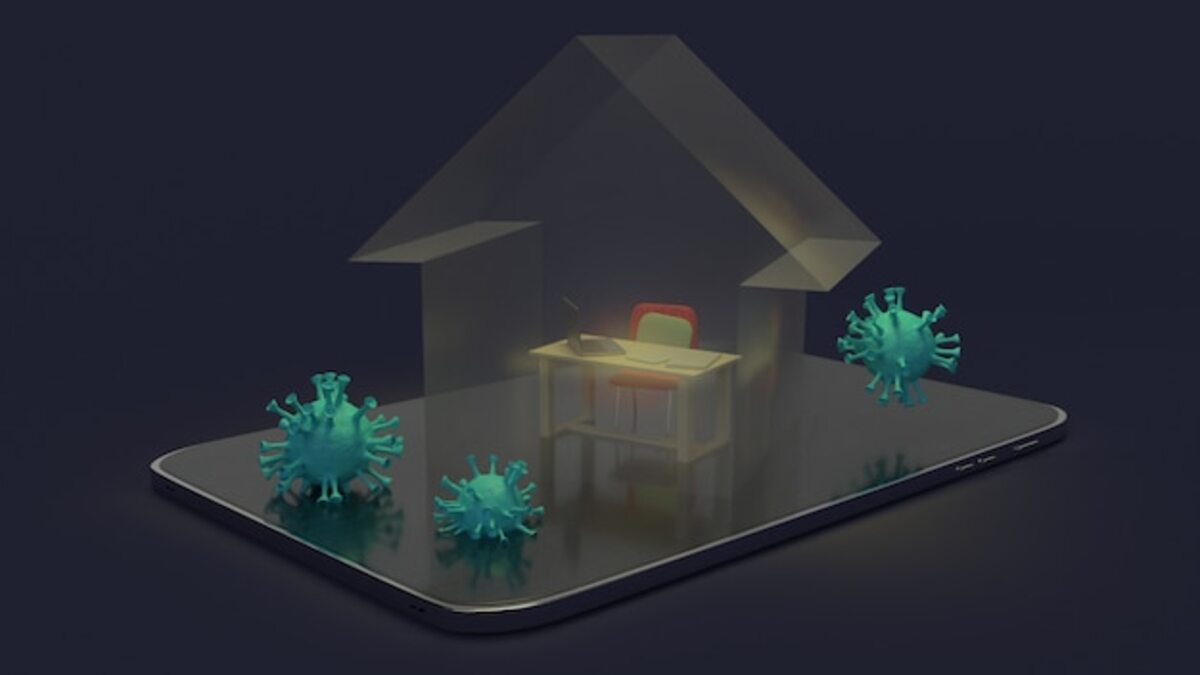Revolutionize your home security with 3D mapping technology.

Revolutionize your home security with 3D mapping technology. In a world where protecting our loved ones and belongings is essential, this innovative tool emerges as an effective solution to keep any threat at bay. With 3D mapping, you can create a detailed and real-time virtual layout of your home, allowing for smart surveillance accessible from the palm of your hand. Discover how this technology can transform the way you secure your living space and provide peace of mind to your entire family.
What is 3D mapping and how does it work in home security?
3D mapping is a technology that uses sensors and cameras to create an accurate three-dimensional model of a space, in this case, your home. Through the collection of visual and spatial data, a virtual plan is generated that allows for a detailed visualization of every corner of the house. This representation not only shows the arrangement of furniture and rooms but also integrates relevant information about critical security points, such as entrances and windows. Thanks to this digitization capability, 3D mapping provides a solid foundation for implementing more effective and personalized security systems.
The functionality of 3D mapping in home security lies in its ability to facilitate intelligent surveillance. By having access to a real-time three-dimensional model, you can monitor your home from anywhere using mobile devices or computers. This means you can receive instant alerts if any unusual movement is detected or if alarms are triggered. Additionally, some advanced systems allow for the simulation of different intrusion scenarios and evaluate how to respond to them. Together, these features not only enhance protection against external threats but also provide you with greater peace of mind knowing that you have complete control over your home security.
2. Benefits of 3D mapping compared to traditional security systems.
3D mapping offers a number of significant benefits compared to traditional security systems that typically rely on fixed cameras and motion sensors. One of the most notable advantages is the ability to create a three-dimensional and real-time model of the home, allowing users to have a complete and detailed view of every corner of their property. Unlike conventional systems that may leave blind spots or rely solely on sound alerts, 3D mapping provides precise and interactive visual information, facilitating the quick and effective identification of any suspicious activity. Additionally, 3D mapping technology easily integrates with other smart home solutions, such as electronic locks and automated lighting systems. This not only enhances security by allowing rapid responses to potential intrusions but also offers convenience to the user. For example, when an unusual event is detected by the system, you can instantly activate outdoor lights or send a notification to your mobile phone. Together, these features not only elevate the level of protection in your home but also contribute to an overall sense of control and peace of mind for you and your family.
3. How to implement a 3D mapping system in your home.
To implement a 3D mapping system in your home, the first thing you will need is a 3D scanner or a camera compatible with this technology. These devices are responsible for capturing the structure and dimensions of your home, generating an accurate digital model. There are several options on the market, from professional devices to more affordable solutions for everyday users. Once you have the right equipment, you will need to take a tour of all the areas of your house, ensuring that you cover every corner to obtain a complete and detailed representation of the space. This first step is crucial as the quality of the mapping will determine the effectiveness of the security system you will implement later.
After generating the 3D model, the next step is to integrate this map into specialized security and surveillance software. Many platforms offer tools that allow you to link security cameras and sensors to your virtual plan, providing an interactive and personalized experience. Through this interface, you can establish safe zones and detect any unusual activity in real time. Additionally, some applications even allow you to set up automatic alerts that will notify you if motion is detected in specific areas during scheduled times. With this integration, you will not only enhance the protection of your home but also have total control over all activity within it from any internet-connected device.
Finally, it is important to keep both the 3D model and the associated surveillance systems updated to ensure their long-term effectiveness. This includes conducting periodic reviews of the mapping whenever significant modifications are made to the home or when new technological devices are added. Likewise, make sure to stay informed about updates to the software used; often, these include important improvements in terms of security and additional functionalities. Adopting this proactive approach not only maximizes the security of your home through the use of 3D mapping but also provides you with a dynamic tool that evolves along with your needs and changes within the family space.
4. Technology Comparison: 3D Mapping vs Conventional Security Cameras.
The comparison between 3D mapping and conventional security cameras reveals significant differences in terms of effectiveness and functionality. While traditional cameras offer passive monitoring, limited to recording what happens within their field of view, 3D mapping provides a three-dimensional representation of the space, allowing for the identification of vulnerable areas and possible entry points for intruders. The ability to create a virtual layout not only enhances the visualization of spaces but also facilitates the quick identification of critical areas that require attention. This translates into a more agile response to any potential threat.
Additionally, 3D mapping allows integration with smart security systems, offering a higher level of control and customization. Unlike conventional cameras, which can be prone to false positives when detecting movement or sound, mapping technology provides accurate data about the exact location and nature of the detected event. This means that homeowners can receive specific alerts and context about what is actually happening in their homes. In summary, while traditional cameras are useful for recording and reporting on past events, 3D mapping transforms surveillance into a proactive and connected experience, better adapting to modern security needs.
5. Practical cases: Homes that have transformed their security with 3D mapping.
The implementation of 3D mapping technology has allowed many homes to elevate their security levels to new heights. In a house in the urban center, for example, the owners used this tool to create a detailed plan that included not only the main entrances but also blind spots that could be vulnerable to intrusions. By integrating cameras and sensors in these strategic points, they were able to monitor their home in real-time from anywhere. This family reported a significant reduction in their anxiety regarding security, knowing that they had a complete visual system that allowed them to act quickly in case of any eventuality.
Another notable case is that of a family living in a rural area, where distances can hinder immediate response to suspicious situations. Using 3D mapping, they created a virtual model that not only helped them identify access points to their property but also plan evacuation routes and safe points in case of emergency. Thanks to this three-dimensional visualization, they were able to optimize the placement of their alarm devices and automated outdoor lights, significantly increasing their sense of security and well-being. These examples demonstrate how 3D mapping can be adapted to different environments and needs, providing customized solutions for each home.
6. Integration of 3D mapping with mobile devices and virtual assistants.
The integration of 3D mapping with mobile devices and virtual assistants represents a significant advancement in home security, offering users an intuitive and accessible experience. By connecting your 3D mapping system with smartphones and tablets, you can access detailed visualizations of every corner of your home from anywhere. This allows users to stay informed about activity in their residence in real-time, receiving instant alerts about any anomalies detected by cameras or sensors. Additionally, the ability to control aspects such as lights or locks from a mobile app adds an extra layer of convenience and security.
On the other hand, the use of virtual assistants like Alexa or Google Assistant in conjunction with 3D mapping transforms the user's interaction with their home environment. Imagine being able to ask your virtual assistant about the status of the doors or if there is any unusual activity captured by the cameras; this not only simplifies monitoring but also allows for automated responses to specific situations. For example, if movement is detected in an unauthorized area, you could program the assistant to send you an immediate alert or even activate alarms automatically. Thus, the combination of 3D mapping with mobile technology and smart assistants not only enhances security but also turns your home into a smarter and more proactive space against potential threats.
7. Considerations when choosing a 3D mapping service provider.
When choosing a 3D mapping service provider, it is crucial to consider the company's experience and reputation. Researching their track record in the market and reading reviews from previous clients can give you a clear insight into the quality of service you can expect. A provider with a solid history will not only ensure accurate technical results but will also give you confidence in handling your personal data and the security of your home. Additionally, make sure they have the necessary certifications and adhere to the appropriate regulations to operate in your area.
Another important aspect to evaluate is the technology used by the provider. The quality of the hardware and software employed in the 3D mapping process can significantly affect the final results. Choose companies that use advanced tools and updated techniques to ensure an accurate and detailed representation of your space. It is also advisable to inquire about the visualization methods they offer; some companies may provide access to interactive platforms or mobile applications that facilitate the management and monitoring of the system from anywhere, which adds additional value to your investment in security.
8. Future of 3D mapping in the evolution of home security.
The future of 3D mapping in the evolution of home security promises to be revolutionary, as this technology continues to develop and improve rapidly. As artificial intelligence and data analytics systems are integrated, 3D mapping will not only allow for detailed layouts of spaces but will also be able to predict behavior patterns based on daily activities. This means that systems will be able to identify unusual or potentially dangerous situations in real-time, sending immediate alerts to homeowners or security services. Thus, prevention becomes a tangible reality, allowing for action before an incident occurs.
Additionally, 3D mapping will facilitate the customization of security solutions based on the specific needs of each home. Users will be able to adapt their systems to monitor critical areas through smart sensors integrated directly into the virtual environment created by the mapping. Imagine being able to visualize your house from anywhere and make instant adjustments to maximize its security. With tools like drones and cameras connected to the 3D system, it will be possible to obtain a panoramic view of the home, significantly increasing family peace of mind knowing that every corner is under effective surveillance. Thus, the future of 3D mapping not only redefines the way we perceive home security but also sets new standards in protection and peace of mind for all modern homes.



